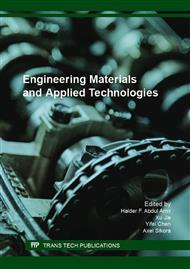p.59
p.64
p.70
p.76
p.85
p.94
p.98
p.103
p.110
Architecture and Engineering of Hydrogen Fuel Cell Power Generation Based on Renewable Energy
Abstract:
The paper presents an architecture and engineering of hydrogen fuel cell electric power generation system based on renewable energy that already installed in Tenjolaya village, Wanassalam sub-district, Lebak - Banten Province. It also discloses some important information as well as some valuable experiences from the pilot plant operation. The renewable electric power generation system combines wind turbine, photovoltaic, hydrogen electrolysis and fuel cell. The basic design of this system is focused on energy storage in the form of hydrogen gas that can be converted back into electricity by using fuel cell units. The engineering development was done to address the issues on limited energy storage in the battery unit which has several drawbacks i.e. short battery lifetime, limited storage capacity and rigorous and continuous maintenance schedule. To enable remote control and monitoring, a web based monitoring system was developed. From the monitoring system the following information are obtained: the amount of electrical power produced by the wind turbine that was intermittent and depends on time that reached 3000 W; similar pattern is observed from the output power of solar PVs and a maximum point of the solar cell power generation was 640 Watt; the time of electricity production by the wind turbine and the solar cell is complementary to each other in every one day cycle. Two valuable experiences have been gained those are: the location near sea shore has a very corrosive air that damages the wind turbine component, and the use of fuel cell requires high investment cost.
Info:
Periodical:
Pages:
110-117
Citation:
Online since:
September 2016
Authors:
Keywords:
Price:
Сopyright:
© 2016 Trans Tech Publications Ltd. All Rights Reserved
Share:
Citation:


